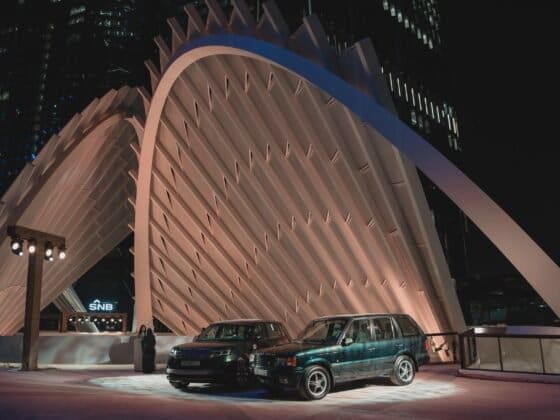“Bentley began with a straightforward philosophy: the relentless pursuit of both luxury and performance” states the Bentley Motors website. It is not surprising then that Bentley is a name now synonymous with luxury, refinement, and performance. A brand whose value is not built on the back of slick marketing, but rather, on the achievements of its world-class engineers and artisans who collectively and continuously challenge the limits of what is possible, and who are uncompromising in their art. Metal, wood, leather, glass and other materials, each of the highest standard, are shaped by these masters to become part of something extraordinary.
Wood, along with leather, has always been an essential ingredient in the creation of Bentley’s interior space. These days, wood is largely represented by the exclusively created veneer that adorns the front dashboard and door panels. Of all the bespoke materials used by Bentley, the wood veneer is more than likely to be underappreciated by the casual observer in terms of the effort that goes into producing one to Bentley’s exacting standards. A closer look at how these wood veneers are sourced, processed and finished exemplifies Bentley’s obsession with perfection.
Bentley has a collection of seven exclusive veneers not offered by any other manufacturer. These veneers are produced from special woods that are sourced from countries as far apart as Canada and China. The responsibility of discovering and sourcing these woods falls on the shoulders of Bentley’s in-house team of veneer hunters led by Alex Groh. He is a man driven by passion. “Wood is my life”, he says. “For almost four decades, I’ve been searching the world for it. Certain species exist in only one spot on Earth. And sometimes, even within that spot, [some areas have] better conditions and [where the trees] grow best”.
The collection of exclusive veneers that have made the cut now include the finest specimens of walnut, eucalyptus, madrona, vavona, ash and their newest find, the American Red Gum.
Wood from a particular source is chosen only if it meets Bentley’s demanding standards for ethical sourcing and sustainability. If it does, then it is put through rigorous testing and verification to ensure that the wood meets Bentley’s exacting durability and quality control standards. The collection of exclusive veneers that have made the cut now include the finest specimens of walnut, eucalyptus, madrona, vavona, ash and their newest find, the American Red Gum. Also known as American Sweet Gum tree, it is Bentley’s first new veneer offering in five years. This time gap should give some idea of the work involved in discovering and sourcing these unique specimens. The American Red Gum tree is a native of the Mississippi wetlands, where the soil is rich and moist, and the forests are dense and vast. Red Gum wood has a distinct perfumed scent which was the inspiration for the name of its veneer: Red Amber.
Stephen Stanforth, Bentley’s designer for Colour & Trim, explains the process of selecting a new veneer from a designer’s perspective: “We look at thousands of veneers to start with when we are looking for a new veneer. Liquid Amber or Red Gum, in Mississippi, is some of the best in the world, and it has the most amount of muscle and flesh through the grain”.
The selection of Red Amber also fulfills Bentley’s commitment to sustainable sourcing of raw-materials as explained by Marine Godot, manager, Material Development: “There are areas of the world that we will avoid for ethical reasons. So, going to America, for example, is a great opportunity because this is a vast land and there is a lot of forests, and different climates, and different soils”. In spite of the abundance, Red Amber veneers are harvested only twice a year due to restricted access to the forest where it grows.
Once the wood is sourced, it is cut into rough veneer and given its prerequisite treatment. In the case of the Red Amber, it is put through a natural slow smoking process which takes several weeks to complete. This smoking process gives the Red Amber a deep, rich brown lustre while retaining its original warm red hue. The red Amber is then shipped to the Bentley workshop at Crew.
At the workshop, each rough cut of veneer is methodically scrutinised. As an example, 20,000 square metres of walnut material may take up to two weeks to find and remove any defects, thus rejecting anywhere between 30 and 70 percent of the material offered. For any material to pass the inspection, it must have a high-burr density, minimal sapwood (the living layer) and feature no bark growth or structural defects.
The whole process from tree to exclusive Bentley veneer takes at the least eighteen months.
The rough veneer that makes the grade is cut to a precise 0.6 mm layer, put through stability tests, and UV stabilizer is added to prevent bleaching, and to preserve their natural beauty for decades. The exquisite finishing touches and polish are then added. The whole process from tree to exclusive Bentley veneer takes at the least eighteen months.















